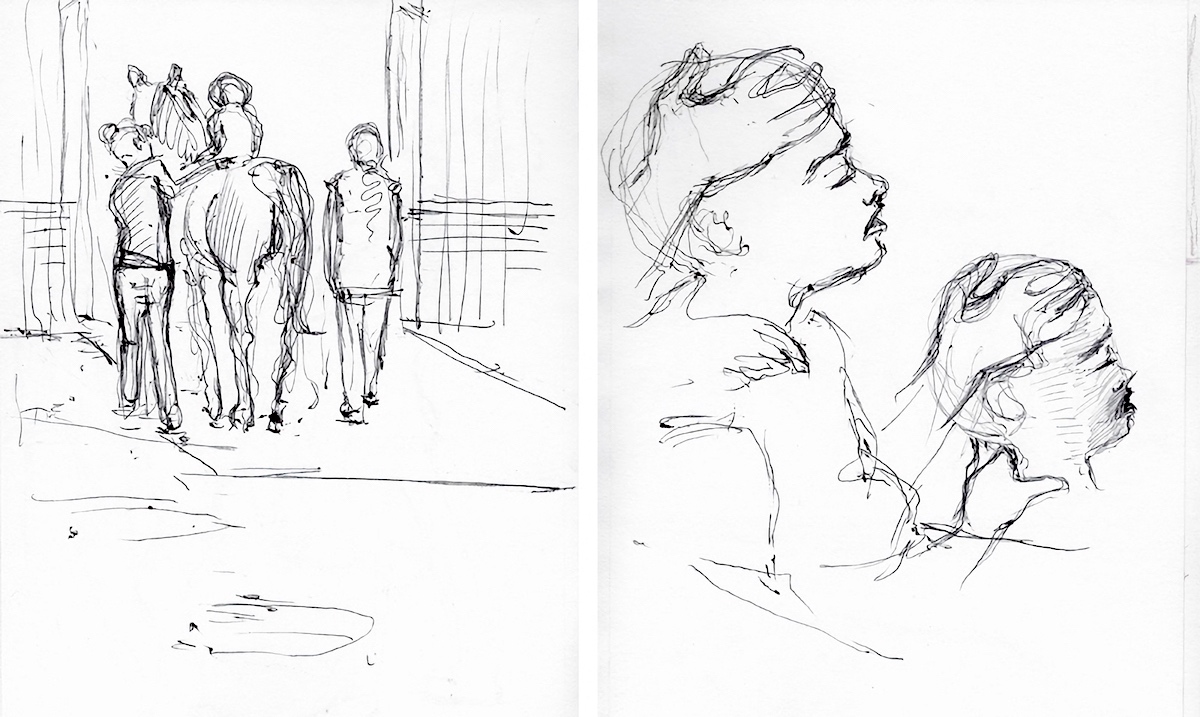Student Blog

Reflections From My Residency: Using the human animal bond therapeutically ⟩
April 2, 2019, by Antonietta
As I discussed in the previous blog, humans’ perception of our emotional bond with animals started being examined and debated in the mid 1700s. But when did we start to use this bond therapeutically? The earliest report is at the York Retreat, an asylum for the mentally ill, in England 1792 where the inhabitants cared for rabbits and chickens (Netting, Wilson, & New, 1987). This therapeutic strategy took quite a bit longer to make its way to the United States, but starting in the 1940s at Pawling Air Force Convalescent Hospital, veterans were encouraged to work with farm animals as part of their recovery. By the 1970s dogs became a common tool in therapeutic settings: 48% of institutes incorporated them in some way per an American Humane Education Society report. Animals are now well-established as therapeutic partners, used by many disciplines and in variety of ways. But why? History has moved on from so many other treatments of the past. Plunge baths from the 1700s aren’t used anymore and lobotomies — which were very popular in the 1950s — are considered repugnant and deemed unethical. But animal assisted therapy has gotten stronger, more common, and better supported by research. What makes it so effective? Is it the emotional bond between human and animal?
Curious about this therapeutic bond and interested in the power of images to shed light on relationships, my father Carmine, organized a field study at The Children’s Ranch. He came every Friday afternoon for a semester to observe the sessions and sketch what he was seeing. He wanted to know if he could capture the mystery of this therapeutic bond in a visual form: painting.

Carmine and Storm
For me as a therapist, it was an interesting experience to have this observer participating in our sessions, but I was curious what it was like for him. Since he’s my dad it was easy to get an interview!
How did you decide how much time you would spend at The Ranch?
“That decision depended on a specific rule I set for myself: my documentation would not employ any cameras; all my observations would be drawn by hand. Using a camera would have sped up the work, but it also would have had a few undesirable side effects.
- Cameras reduce the actual amount of time you need to spend on the ground and therefore can lead to a false illusion of understanding the authentic experience.
- Cameras automatically create a default composition which is hard to modify. In the process, they can eliminate key parts of an experience.
- Cameras make people pose! That was something I wanted to avoid. To see genuine moments, I needed to be integrated as part of the team so that everyone was relaxed and acting naturally.
I needed to spend time on the ground to gather visual data, build relationships slowly, accrue insight, and become a participant. It took about 4 months of consistent visits to get to that point, but I didn’t know that in advance”
What were some of the challenges you encountered?
“One challenge was developing a sketch kit that was completely mobile. Since sessions at the Ranch move around a lot, I needed to be agile and flexible. In a way, I was a member of the team and didn’t want anything to be slowing me down while we transitioned from the chicken coop to the barn. So, every piece of equipment had to be portable and always ready-to-go.
A second challenge was that children are curious, and my tools often piqued their interest. The kids wanted to play with them and once they saw some of the sketches, there was a risk they would be distracted from the work they were doing with the therapist. I had to find the line between engaging them and building our relationship, and redirecting them back to the focus of their time at the Ranch, which was the caring for the animals.
However, the fact that the kids were conscious of being drawn was significant in another way. I’m interested in how these sketches, and eventually the finished oil paintings, might serve as a mechanism for self-reflection for the children. I believe that how we picture ourselves is a big part of our identity formation. When the paintings are exhibited at my studio later this year and everyone is invited to the opening, I am curious how the children and their families will respond to visualizations of themselves participating in really unique and meaningful experiences.”
Talk about your trip to visit me at Skyline Therapy Services in Albuquerque.
“You and I had talked a lot about the differences between Animal Assisted Therapy and Hippotherapy, but it wasn’t until I got to see both that I really understood. Your work at the Ranch grows out of a relationship you foster between the children and the animals. The activities are structured around caring for the animals’ needs and understanding their well-being, as a way for the child to develop their own sense of self, autonomy, and identity as well as any other goals you are working on. From a visual point of view, that kind of relationship is subtle and elusive.
At Skyline, where Hippotherapy is the main treatment tool, it is not about the emotional bond, but the relationship between bodies. For an artist, that kind of spatial relationship is more visible and more direct; you you don’t need to visualize a mood, or a state of mind. With Hippotherapy, it much more physically evident how the therapists are helping and how the child’s body changes before and after their session.”
Now that you have finished your field work and are starting on the oil paintings, do you think you have achieved your goal of visualizing the bond?
“After I finished amassing the sketches my next big challenge was to create compositions for the paintings. These were based not just on the drawings, but also my memory and a kind of intuition that had been created by everything I had seen. The compositions were also determined by basic pictorial conventions and requirements. I know that amounts to a lot of variables. My concern as an artist is that what results might be an interesting picture, but not real documentation. I guess the critical test will be when the kids, therapists, and families see and judge for themselves.”
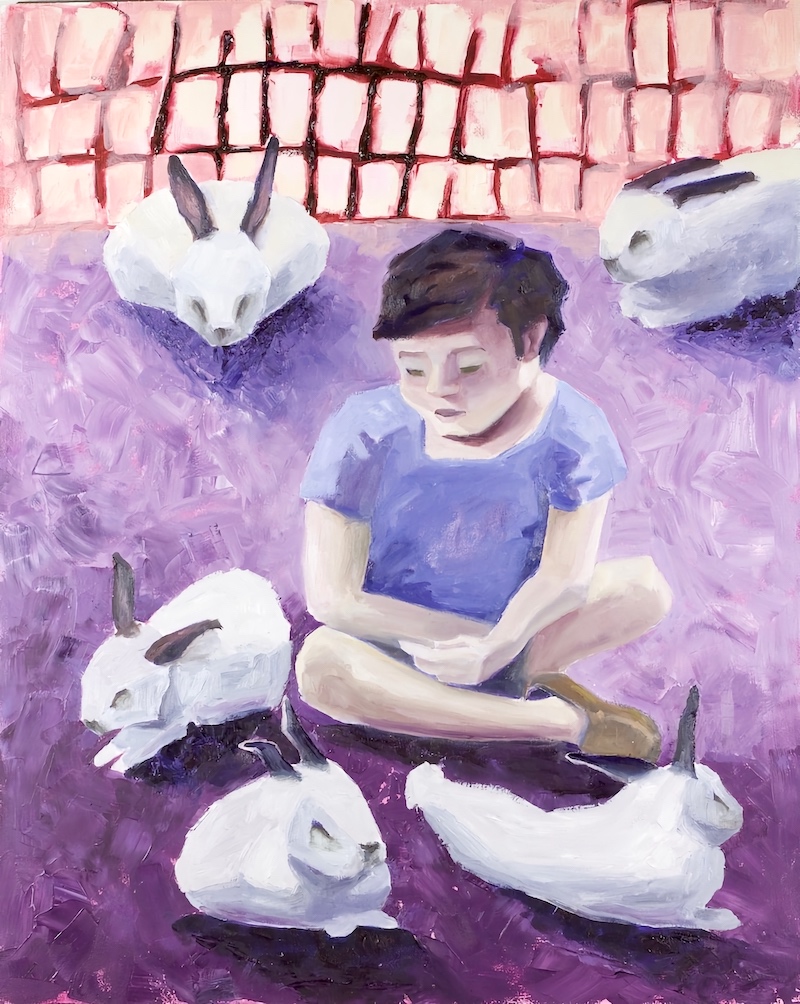
Child with rabbits
When I look at the paintings, I see what looks like my treatment sessions but also feel what it is like the be at the Ranch. It is amazing to see a visual image of that sense of calm when a child with ADHD sits quietly with the rabbits, because that is what makes them feel happy and “green.” It is incredible to see in a permanent form, the fleeting connection between a child and horse that is so strong it can get a kid out of her home despite immense rigidity. I was happy to have an extra member of our team when my dad was visiting the Ranch and I’m very excited to see what my students think of these pictures.
Netting, F. E., Wilson, C. C., & New, J. C. (1987). The human-animal bond: Implications for practice. Social Work, 32(1), 60–64. https://doi.org/10.1093/sw/32.1.60
⋯
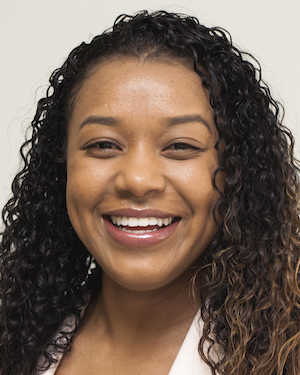
Culturally-Informed Healthcare: Modifying treatment to match the needs of the community. ⟩
April 1, 2019, by Serena
One of the many benefits of attending USC’s OT program is having the ability to attend other healthcare department’s events. Ms. Gwendolyn Flynn, the former policy director of the Community Health Council, presented at USC at an event hosted by USC’s Lifestyle Medicine Interest Group and USC’s Student National Medical Association (SNMA). Although the groups are apart of the medical school, the students welcomed me to join the presentation as an occupational therapy student.
She spoke on the health inequities experienced within the Black communities due to the inaccessibility of whole plant-based foods. She highlighted the higher rates of lifestyle related chronic conditions in the Black community such as obesity and high blood pressure. In addition, she presented information on the food deserts (now more accurately called food apartheids) found in urban communities such as higher rates of liquor stores and lower frequencies of supermarkets with fresh produce. At the end of her presentation she made 5 recommendations for healthcare professionals to address this issue, which I have listed below.
- Emphasize disease prevention and wellness programs.
- Partner with local community organizations (i.e., Healthy Food Zones) in order to advocate for policy change. If you are unable to join then write letters, set up a meeting, or make a public testimony to show that this change matters because your voice is influential.
- Promote nutrition education classes/ workshops in order to make the knowledge more applicable to patients’ everyday lives.
- Write food and exercise prescriptions to change lifestyle (i.e., a prescription to go to the gym). I would like to add to make that prescription something meaningful and doable, think SMART goal.
- Give out recommendations such as books and documentaries while in practice to help inspire and further educate your clients on the benefits of lifestyle changes.

Ms. Gwendolyn Flynn, the former policy director of the Community Health Council, presented at USC at an event hosted by both USC’s Lifestyle Medicine Interest Group and USC’s Student National Medical Association (SNMA).
It was really motivating and inspiring to receive information on specific actions that I can take to combat the increase of chronic conditions within my own culture. As I come closer to gaining my OT license, I am looking forward to the ability to serve the community with the recommendations the community has given me and then combining it with my educational, volunteer, and life experiences.
⋯

Externship: Opportunity to Explore What I’ve been Interested ⟩
April 1, 2019, by Goeun
In the Leadership Capstone Course, I had a chance to participate in a two-week externship to learn communication and leadership skills. I went my leadership externship in the USC Davis School of Gerontology, National Resource Center on Supportive Housing & Home Modification, and Fall Prevention Center of Excellence. I chose the site as I’ve been interested in home modifications since I was in my country, Korea. I was working in a hospital as an occupational therapist and after patients were about to be discharged, they naturally planned to move to other hospitals, skilled nursing facilities, or rehabilitation centers. However, after their stay at other facilities, they need to go back to their homes anyway and I could not help patients to go through the process and build a bridge for them. That brought me interests in home modifications but since there hasn’t been any research or resources about it, I had less chance to explore.
Thankfully, now I’m here, and the USC Davis School of Gerontology, they are well-known for home modifications and fall prevention which is a key factor in home modifications. Moreover, from January, I’ve been taking the Executive Certificate in Home Modification Program from the USC Davis School of Gerontology, so I wanted to learn more from them.
During the externship, I did a lot of research regarding home modifications in general, assessment tools in home environments and fall prevention, health-related issues about Asian-Americans and home modifications related specifically. Also, I had an opportunity to attend a class, Housing, and Community Policies and Program. In that course, I visited an assisted living facility for older adults with dementia or other physical problems. The other thing that I did was interviewing and meeting various professions. I was able to interview gerontologists from different settings, an occupational therapist and a building contractor. By talking with them, I was able to listen to different perspectives and advocate what occupational therapy is especially for students who are not familiar with it. The good thing was that people that I interviewed already knew about occupational therapy and our roles as well. Lastly, I combined and synthesized what I have done and set goals in short-term and long-term.
It was a precious experience to learn more about what I’ve been wanting to know and I hope I can expand later in the future!

I took a picture with Dr. Pynoos who is a pioneer in home modifications.
⋯
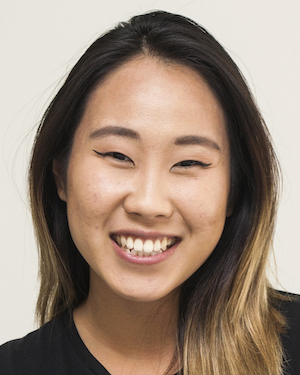
Ghana Part 1 — Cultural Exposure ⟩
March 26, 2019, by Joyce
Diversity Externships International
Hello everybody! It feels weird blogging again because of the long hiatus but boy do I have things to share with you! As you probably have read about already, the second years were away on externships + spring break these past few weeks. While Jessica and Serena went to Australia, Melissa stayed local, I decided to go to Ghana.
I’m splitting this topic of externship into various posts because there are just so much that I want to highlight about this experience and I want to make sure to create the time and space that they deserve. To talk about my experience, I need to go a few years back to the beginning of it all . . .
Alumni and therapist, Bonnie Nakasuji has been coming to Ghana for two decades. In partnership with the Mephibosheth Training Center (MTC), a school and vocational training center for children with disabilities, Bonnie has garnered a close relationship to bring USC OT students. It was once a level 1 fieldwork opportunity now a leadership externship location.
So what was our purpose there? Firstly, Cultural Exposure.

Bonnie as well as the other co-leading therapists, Jenna Kobara and Mariko Yamazaki, have taught us about the importance of sustainability and empowerment. We all have this righting reflex embedded within us, especially as future healthcare professionals, to fix things, whether that’s through offering advice or materials. Instead, the therapists encouraged us to be comfortable in the stillness of the uncomfortable. As Americans, regardless of whether we were Asian or Hispanic, etc. as Americans, we are all called “obrunis”, to which the term has evolved from meaning white person to a privileged, educated, rich person. It is our responsibility to acknowledge that privilege and the cultural differences when stepping into into another culture.
I strongly believe that short term trips like this are not served to drastically change a community, let alone a country’s way of life. Moreover, we as visitors are actually disruptive to this school’s daily routine. For two weeks, they had to accommodate the meals and living arrangement of a team of 40 Americans. I believe that this experience was meant for students to experience and become exposed to the different occupations in a different culture.
Bonnie gave a great example which made me reflect and think about how the things we do as Americans can make waves of effects that are often unseen. She told us how sometimes she feels uncomfortable bringing shoe donations to MTC. While it’s great that the students receive often new shoes to wear for free, we are disrupting the economic flow. Now these students and their families are not spending money at their local shoemakers and these shoemakers will feel the effects, challenging their ability to make money. In addition, how long can one pair of shoes sustain a child? It’s more powerful to work with individuals with what they have and where they are at, something that I have learned must be applied when working in a client-centered profession, meet your clients where they are at, not where you want them to be at!
When observing both the occupational therapists and physical therapists community consultations, I realized that they were very intentional in using assessments that could be understood regardless of culture and language barriers. They also provide education to the child, parent, caregiver, brother, sister, aunt, etc. so that this training and education can sustain the therapy even when they weren’t there.
In addition, I love how we as tourists were able to contribute to the economy. First, a sister of the principal of MTC, a seamstress came by MTC with her measuring tape and differently patterned fabrics. All students and therapists bought fabric and service in creating us individualized pieces. I was so excited for this part . . . to have a dress that will fit me all in the right places is something I have never experienced before!
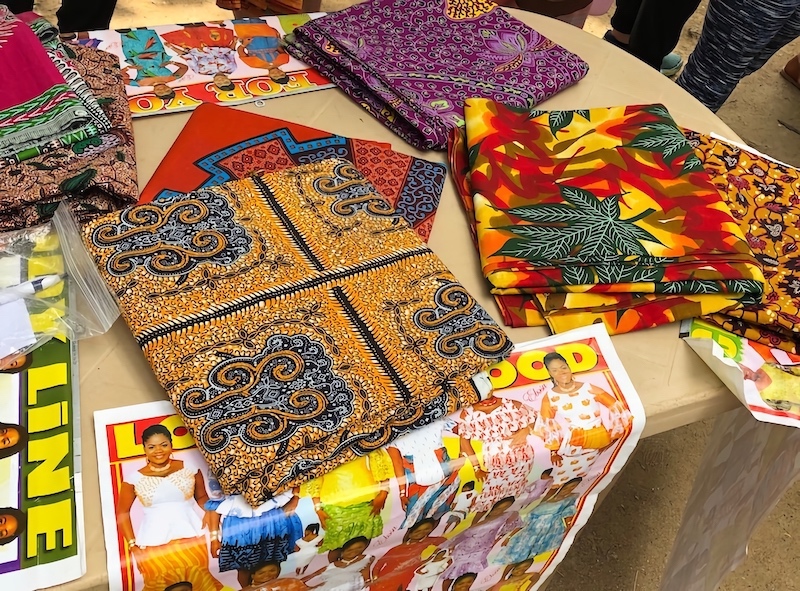
Secondly, at the end of our externship, we went shopping at the local crafts village. I bought some cute earrings and leather sandals. It was also fun to participate in their cultural norm of bargaining to which Bonnie added, “It would be rude to not bargain!” I had so much fun conversing with store owners, asking them where they got/made the items, learning their language, and bargaining for a lower price. What an experience!!

⋯
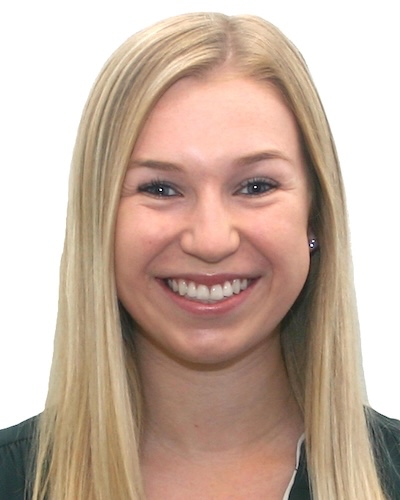
Good Day Mate: Australian Externship ⟩
March 21, 2019, by Jessica P.
If our division hallways have been a little quieter than normal, it’s because us second-years have been away for the past two weeks on our externships. As part of our course OT 540: Leadership Capstone, all students complete an externship. This is a student-driven, create your own experience designed for us to continue developing our leadership and professionalism.
We are able to create an externship that fits our personal interests and career goals, whether that is shadowing an administrator at AOTA to learn more about advocacy, learning more about private practice, volunteering, or traveling to explore occupational therapy in a global context. I had the opportunity to do my externship through our Global Initiatives, run by Dr. Danny Park, to Griffith University in Gold Coast, Australia.
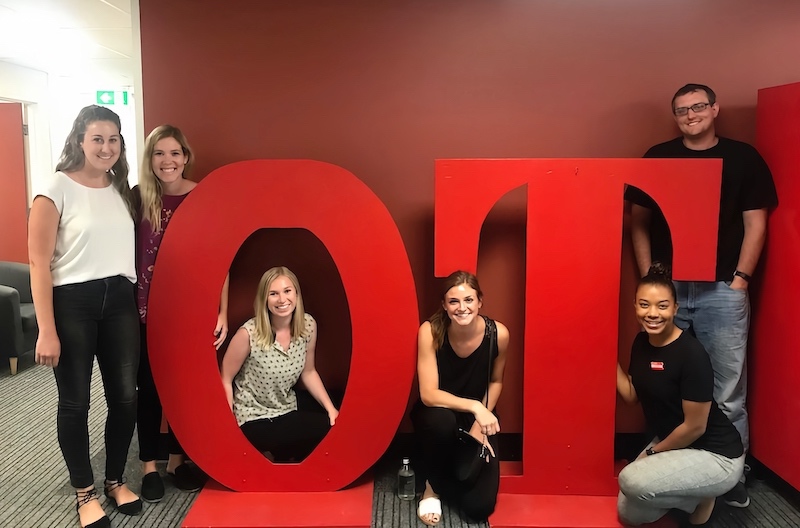
Griffith University’s Occupational Therapy Department
While at Griffith, five other students and I had the opportunity to sit in on classes and go to clinical site visits. It was such an incredible experience to be able to compare global perspectives on occupational therapy. While there were differences between OT in Australia and the United States, it was more similar than different. Griffith’s courses also utilize team-based learning like we do here at USC. This means that much of their class time is spent doing case-study applications and using standardized patients.
Through our clinical site visits, I got to experience the continuum of care in Australia, specifically in the context of universal healthcare. It was amazing to see many of their brand-new hospitals and shadow occupational therapists there.

Visiting Headspace, an outpatient youth & adolescent mental health site

Visiting Queensland Children’s Hospital’s therapy rooftop
My externship team and I also gave a presentation on USC’s academic programs, comparing American and Australian OT, and advice for fieldwork placements.
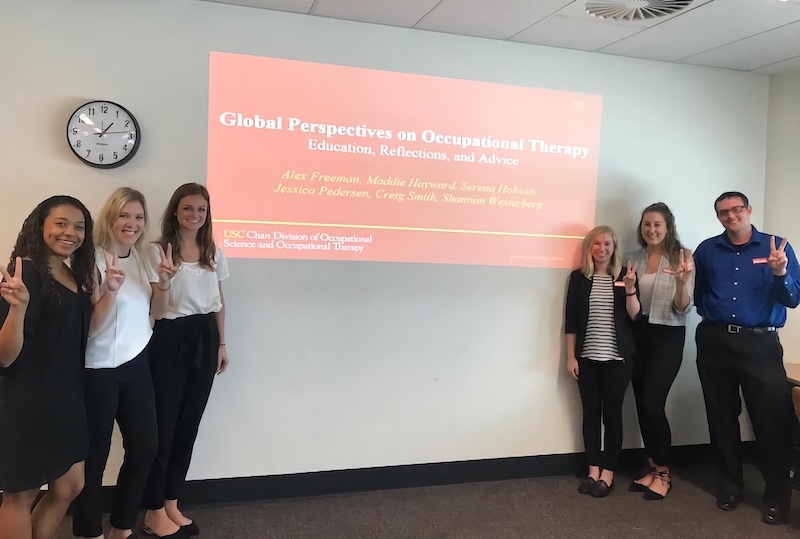
Our two-week externship was also conveniently right next to spring break so four of my classmates and I traveled throughout Australia. We were able to explore Sydney and Melbourne, taking advantage of everything Australia has to offer . . . especially the Tim Tams!
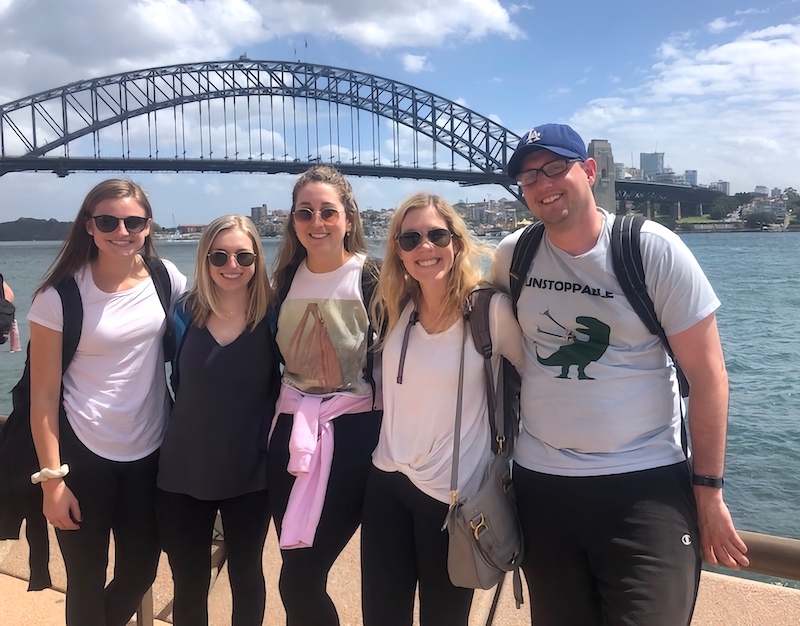
Sydney Harbor Bridge
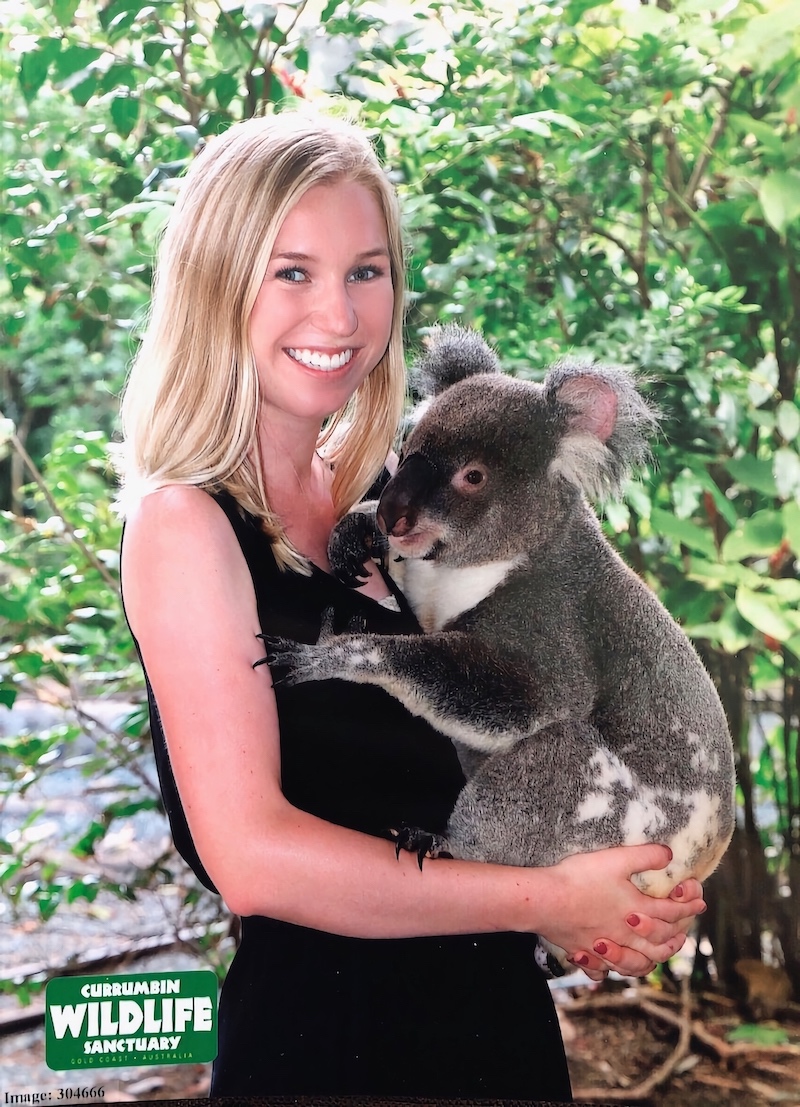
Meeting one of my favorite animals at Currumbin Wildlife Sanctuary
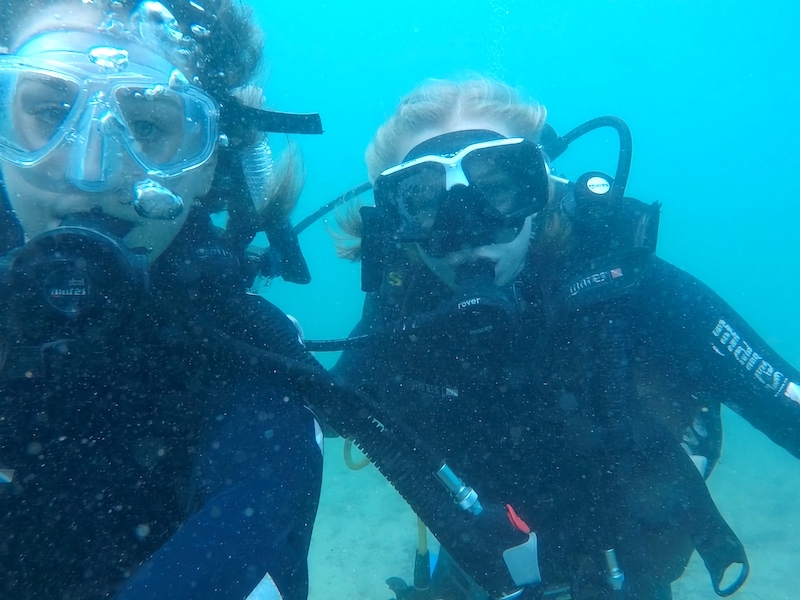
Scuba diving in Gold Coast
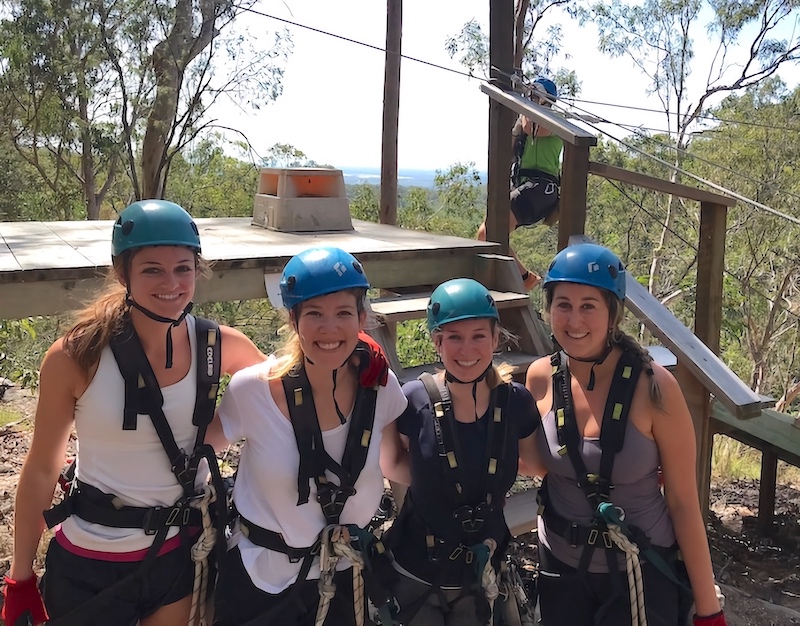
Ziplining in Mount Tamborine
I feel so grateful to be a part of a program that not only allows us this opportunity but pushes us out of our comfort zones to grow professionally and personally. My time in Australia will forever be one of the most memorable parts of my OT education. I know no matter where I am in the world, I am entering one of the most rewarding and amazing professions with the best people.
⋯








